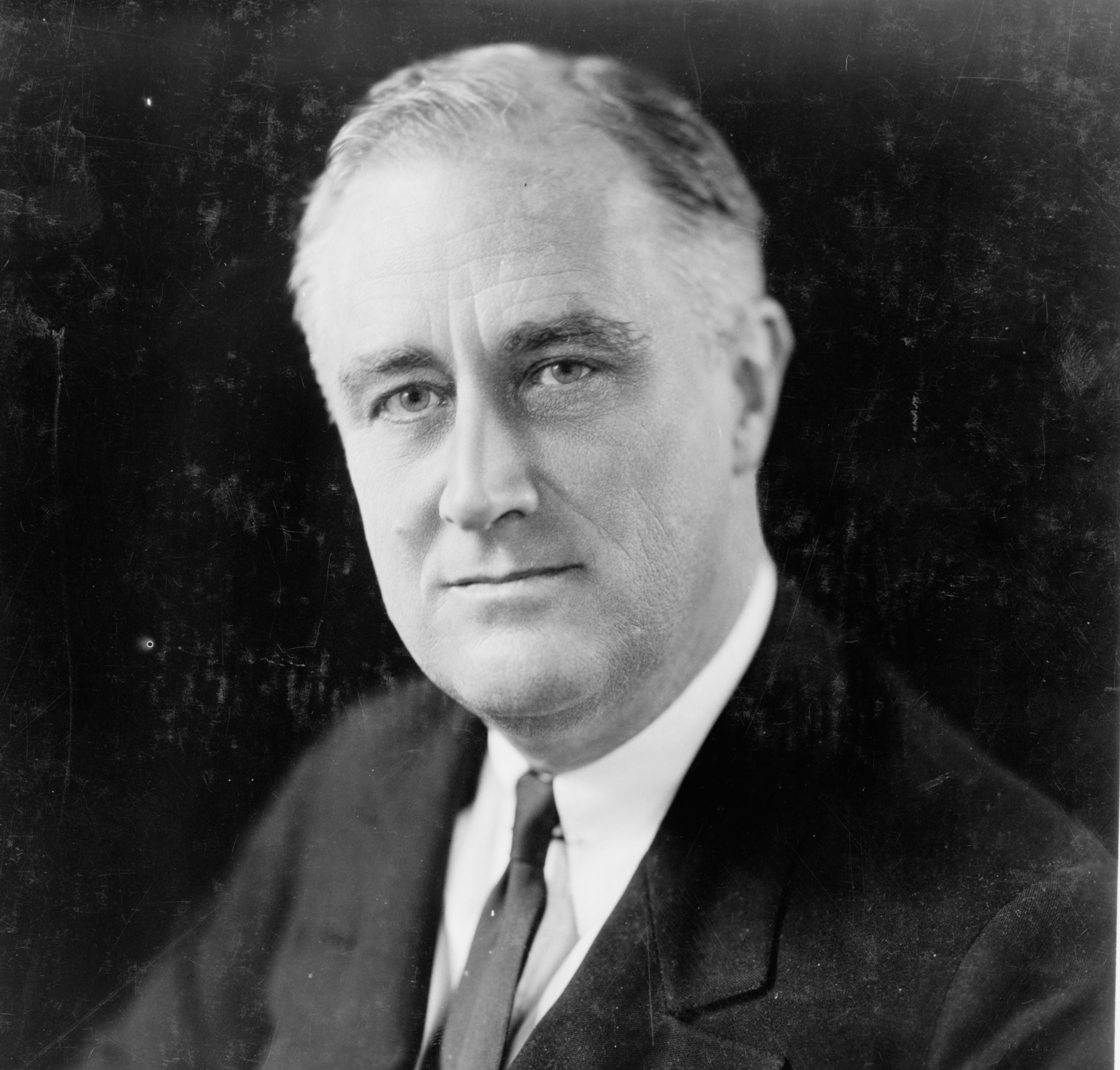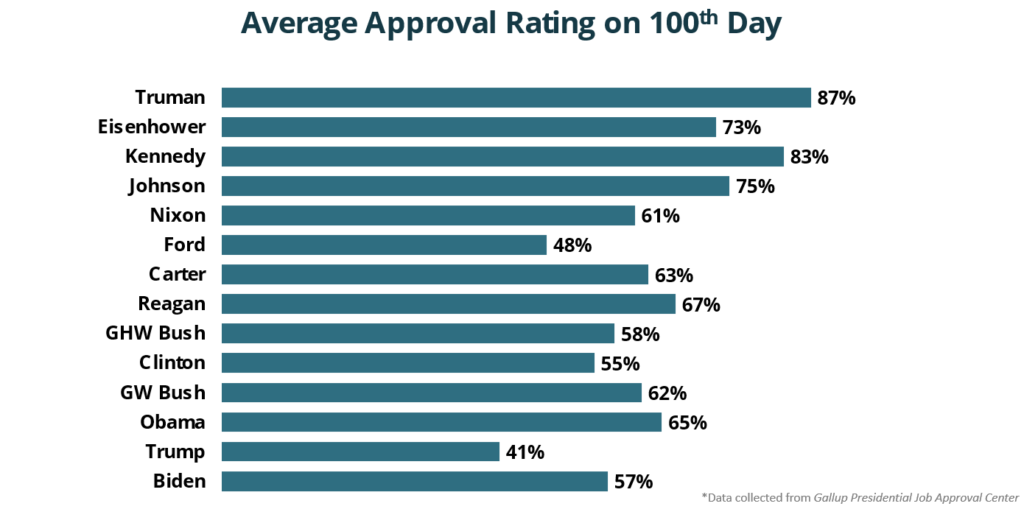featured insight
featured insight

Presidential Approval Ratings at 100 Days
How President Biden’s 100th day approval ratings compare to his predecessors, and what it might mean for the midterms.
President Franklin D. Roosevelt gave a radio address on July 24, 1933, to reflect on his first few months in office. He had begun his presidency by convening Congress into a special session that managed to rush through 76 laws in 100 days. The bulk of his first New Deal firmly in place (the Supreme Court had not yet had its say), Roosevelt used his address “to examine…the crowding events of the hundred days which had been devoted to the starting of the wheels of the New Deal.”1
Since then, the first 100 days of a President’s administration have been seen as an opportunity for them to pursue their top priorities and set a legislative tone for what they hope to achieve. Presidents are typically aided in this by a honeymoon period of high approval ratings, which affords them political capital. The higher their approval rating, the more political capital they have to wield over Congress.
While the sheer output of Roosevelt’s first 100 days will be difficult to match, Presidents since have been similarly ambitious, and President Biden is no exception. During Biden’s first 100 days, Congress passed a massive $1.9 trillion spending package his administration has called “the most progressive piece of legislation in history.”2 Now as President Biden reaches his hundredth day and turns his attention to even larger spending packages, his approval rating will be watched closely, not only as a reflection of the popularity of what he’s done, but also as a rough gauge of how much political capital he has left in the tank.
So far, Biden’s approval rating isn’t as lofty as his legislative aspirations. According to Gallup, which has been conducting polling on Presidents’ approval ratings since the Second World War, President Biden’s approval rating among adults 100 days into his term stands at just 57%. His underwhelming honeymoon period ranks toward the bottom historically. While 57% may seem like a decent rating, Presidents’ first few months tend to be high water marks.

There are a lot of days between Biden’s hundredth day and the 2022 midterms (557 of them to be exact), but a President’s approval rating tends to correlate with his party’s electoral prospects. Since polling began, which was around World War II, Presidents have seen their party lose an average of 28 House seats in their first midterm. With the Democrats holding onto the House majority by just six seats, Biden’s approval rating so far bodes well for Republicans’ chances a year and a half from now.
- Franklin D. Roosevelt, “Fireside Chat 3: On the National Recovery Administration.” July 24, 1933. Transcript from UVA Miller Center. https://millercenter.org/the-presidency/presidential-speeches/july-24-1933-fireside-chat-3-national-recovery-administration.
- Press Secretary Jen Psaki during a press briefing on March 8, 2021. Transcript can be found at https://www.whitehouse.gov/briefing-room/press-briefings/2021/03/08/press-briefing-by-press-secretary-jen-psaki-and-co-chairs-of-the-gender-policy-council-julissa-reynoso-and-jennifer-klein-march-8-2021/

